Department welcomes Twist
 The UAB Department of Physical Medicine and Rehabilitation welcomes Assistant Professor Elizabeth Twist, M.D., effective September 1, 2022. Dr. Twist joins the department as a Physiatrist with specialization in spinal cord injury after completing her fellowship in Spinal Cord Injury Medicine, Case Western in Ohio, where she also graduated residency. Prior to that, she completed her internal medicine internship at Ohio’s MetroHealth Medical Center.
The UAB Department of Physical Medicine and Rehabilitation welcomes Assistant Professor Elizabeth Twist, M.D., effective September 1, 2022. Dr. Twist joins the department as a Physiatrist with specialization in spinal cord injury after completing her fellowship in Spinal Cord Injury Medicine, Case Western in Ohio, where she also graduated residency. Prior to that, she completed her internal medicine internship at Ohio’s MetroHealth Medical Center.
Read more
Knight receives gift from grateful patient
 Amy Knight, Ph.D., ABPP, recently received a lovely painting from a patient as an expression of gratitude.
Amy Knight, Ph.D., ABPP, recently received a lovely painting from a patient as an expression of gratitude.
Read more
Clark receives RCMAR pilot grant
 Assistant Professor Amber Clark, M.D., received her second pilot grant from the Resource Centers for Minority and Aging Research (RCMAR) to study the post-stroke continuum among African American stroke survivors in Alabama.
Assistant Professor Amber Clark, M.D., received her second pilot grant from the Resource Centers for Minority and Aging Research (RCMAR) to study the post-stroke continuum among African American stroke survivors in Alabama.
Read more
Department welcomes new education coordinator
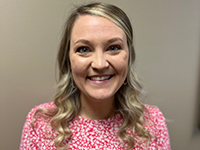 The UAB Department of Physical Medicine & Rehabilitation Assistant is thrilled to welcome our new education coordinator, Savannah Tinsley!
The UAB Department of Physical Medicine & Rehabilitation Assistant is thrilled to welcome our new education coordinator, Savannah Tinsley!
Read more
Azuero presents at Rehabilitation Psychology National Conference
 UAB Department of Physical Medicine & Rehabilitation Assistant Professor, Casey Azuero, Ph.D., MPH, recently presented “Standardization of care for patients with SCI across care continuum: A pilot study” at the 24th Annual Rehabilitation Psychology Conference in February.
UAB Department of Physical Medicine & Rehabilitation Assistant Professor, Casey Azuero, Ph.D., MPH, recently presented “Standardization of care for patients with SCI across care continuum: A pilot study” at the 24th Annual Rehabilitation Psychology Conference in February.
Read more
Open letter from grateful patient
My name is Gloria Bennett, niece of Theresa Peagler, one of the former patients at UAB Spain Rehabilitation Center. Ms. Peagler had part of her leg amputated (up to her knee), so she was transported to UAB Spain for rehabilitation and extra care from the hospital. In addition, my aunt has experienced an abundant number of losses in life; she lost her parents, all her siblings, her daughter, and recently lost her husband several months ago.
Read moreRemember your neighbor during severe weather season
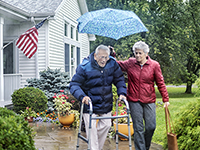 During severe weather season, families make plans for what they need to do in the case of a severe weather threat. When making your plans, University of Alabama at Birmingham’s Rachel Cowan, Ph.D., wants to remind you to remember your neighbors with disabilities.
During severe weather season, families make plans for what they need to do in the case of a severe weather threat. When making your plans, University of Alabama at Birmingham’s Rachel Cowan, Ph.D., wants to remind you to remember your neighbors with disabilities.
Read more
Wilroy featured in the CCTS 2021 Year in Review
 Jereme Wilroy, Ph.D., was recently featured on the "2021 CCTS Year in Review Kudo Board".
Jereme Wilroy, Ph.D., was recently featured on the "2021 CCTS Year in Review Kudo Board".
Read more
Department welcomes Elizabeth Richardson, Ph.D., MSPH
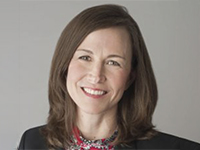 The UAB Department of Physical Medicine and Rehabilitation is thrilled to welcome assistant professor, Dr. Elizabeth Richardson.
The UAB Department of Physical Medicine and Rehabilitation is thrilled to welcome assistant professor, Dr. Elizabeth Richardson.
Read more
Hays discusses burnout in series
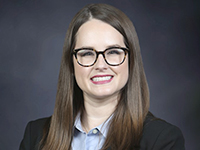 Burnout is on the rise across the United States. In a survey of 1,500 U.S. workers conducted by the online job site Indeed, 52 percent of respondents said they were experiencing burnout, with 67 percent of respondents saying that burnout worsened during the pandemic.
Burnout is on the rise across the United States. In a survey of 1,500 U.S. workers conducted by the online job site Indeed, 52 percent of respondents said they were experiencing burnout, with 67 percent of respondents saying that burnout worsened during the pandemic.
Read more
Medical student mentee receives AAP "Best Paper Award"
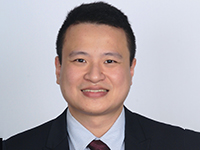 James Lo, medical student mentee of Dr. Yu-Ying Chen, recently received "AAP Best Paper Award" for their project titled "Impact of the COVID-19 Pandemic on Substance Use Behaviors in People with Spinal Cord Injury." The study aimed to understand the correlation between COVID-19 and substance use behaviors for people with spinal cord injury.
James Lo, medical student mentee of Dr. Yu-Ying Chen, recently received "AAP Best Paper Award" for their project titled "Impact of the COVID-19 Pandemic on Substance Use Behaviors in People with Spinal Cord Injury." The study aimed to understand the correlation between COVID-19 and substance use behaviors for people with spinal cord injury.
Read more
Department Celebrates National "Thank a Resident Day"
 Join us today on Resident Appreciation Day in thanking all of our residents. Our residents are often the first face seen by most of our patients/families and they represent us exceedingly well – days, nights, weekends, and holidays.
Join us today on Resident Appreciation Day in thanking all of our residents. Our residents are often the first face seen by most of our patients/families and they represent us exceedingly well – days, nights, weekends, and holidays.
Powell receives 2022 Professional Excellence Award
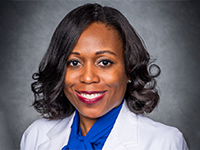 Danielle Powell, M.D., is one of three selected to receive the UAB Marnix E. Heersink School of Medicine Office for Diversity and Inclusion 2022 Professional Excellence Award.
Danielle Powell, M.D., is one of three selected to receive the UAB Marnix E. Heersink School of Medicine Office for Diversity and Inclusion 2022 Professional Excellence Award.
Post-Doc Spotlight: Roshita Rathore, PhD
 Roshita Rathore, Ph.D., is a post-doctoral fellow in Dr. Cowan's Lab at the UAB Department of Physical Medicine & Rehabilitation.
Roshita Rathore, Ph.D., is a post-doctoral fellow in Dr. Cowan's Lab at the UAB Department of Physical Medicine & Rehabilitation.
Azuero, Mahoney represent department at "lunch and learn"
 Casey Azuero, Ph.D., MPH, and Elaine Mahoney, Ph.D., discussed strategies for addressing poor insight during acute rehabilitation at the acute therapy "Lunch and Learn" on Dec. 16.
Casey Azuero, Ph.D., MPH, and Elaine Mahoney, Ph.D., discussed strategies for addressing poor insight during acute rehabilitation at the acute therapy "Lunch and Learn" on Dec. 16.
Mahoney presented strategies for working with patients who have limited insight into their deficits because of cognitive impairments that resulted from an injury.
Azuero discussed strategies for working with patients when emotional defenses are impairing their ability to fully participate in their rehabilitation and learn health behaviors related to their condition.
Overall, the discussion was interactive and well received.
Kudos to Drs. Azuero and Mahoney for representing the Department of Physical Medicine & Rehabilitation!
Carr, Li receive CEDHARS pilot funding to further research
 Conley Carr, M.D., BSc, and Jai Li, Ph.D., MS, have been awarded a $35,000 pilot fund from the Center for Engagement in Disability Health and Rehabilitation Sciences (CEDHARS) to support their research on disability health.
Conley Carr, M.D., BSc, and Jai Li, Ph.D., MS, have been awarded a $35,000 pilot fund from the Center for Engagement in Disability Health and Rehabilitation Sciences (CEDHARS) to support their research on disability health.
Dr. Conley Carr study titled "Low-Carbohydrate Diet to Reduce Pain and Increase Quality of Life in Amputees” for consideration to the 2021 Center for Engagement in Disability Health and Rehabilitation Sciences (CEDHARS) pilot funding RFA. ?
Dr. Jai Li study titled "Two Birds with One Stone: Impact of A Low Glycemic Index Diet on Postprandial Hypotension and Glucose Metabolism in Individuals with Spinal Cord Injury.”
Arnoldo Vasquez Hernandez mentioned in AL.com
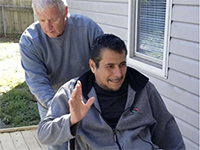 "It’s been almost one year since a Fultondale father lost his leg while saving his daughter in the January tornado that destroyed his home, and Arnoldo Vasquez Hernandez says he has a lot for which to be thankful."
"It’s been almost one year since a Fultondale father lost his leg while saving his daughter in the January tornado that destroyed his home, and Arnoldo Vasquez Hernandez says he has a lot for which to be thankful."
Dr. Amie McLain to retire after years of outstanding service

After 33 years of service to UAB, Amie McLain, M.D., former Chair of the UAB Department of Physical Medicine and Rehabilitation, has been appointed Professor Emerita and plans to retire from clinical practice.
Throughout her career, McLain has founded and directed the nation's first reproductive health clinic for women with disabilities. She has served on the NIH Advisory Committee for Health of Women with Disabilities, the United Spinal Association’s national committee, “Women Without Limits”, and was a panel member for the Consortium for Spinal Cord Medicine to develop clinical practice guidelines for women with spinal cord injuries (SCI).
McLain served as president of the American Spinal Injury Association and as a member of the International Spinal Cord Society’s scientific committee and council. She has published a number of research studies in peer-reviewed journals and has served as a reviewer for Spinal Cord, Journal of Spinal Cord Medicine, and Archives of Physical Medicine and Rehabilitation. A great achievement was her authorship of the chapter “Women with Disabilities” in the well-known obstetric textbook, Obstetric Medicine; Management of Medical Disorders in Pregnancy. 6th ed., edited by Cohen and August and published by People’s Medical Publishing House, USA.
Prior to attending medical school, McLain worked for two years at Spain Rehabilitation Center in the UAB Division of Urology pursuing research activities involving basic science investigations of urological complications following SCI. She completed a residency in physical medicine and rehabilitation at UAB and, since joining the staff as a faculty member in 1988, has made her major focus of clinical research activity the medical management of spinal cord injuries and disorders.
 McLain’s passion, insights, and convictions have shaped patient care, education, and research. Her distinguished career has left an impact on the department. As she retires, the department hopes to expand upon her legacy of excellence.
McLain’s passion, insights, and convictions have shaped patient care, education, and research. Her distinguished career has left an impact on the department. As she retires, the department hopes to expand upon her legacy of excellence.
“I have had the opportunity to grow professionally due to the encouragement, support, and resources provided by UAB. While my training and career have been centered in one place it gave me a very unique perspective of UAB. I’ve experienced so many School of Medicine and Department of PM&R changes and growth. I’ve met and worked with many people throughout the decades —both within the institution and also in the community and state—who have been truly dedicated to the goals and values of our mission. It has been rewarding to see that dedication make our health system what it is today. Not too many people can take pride in that longevity.“ said McLain.
International Day of People with Disabilities
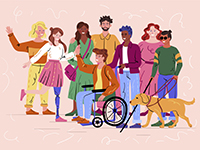 To date, 61 million adults in the United States live with a disability, accounting for 26% of the population, or one in four individuals.
To date, 61 million adults in the United States live with a disability, accounting for 26% of the population, or one in four individuals.
The UAB Marnix E. Heersink School of Medicine, Department of Physical Medicine & Rehabilitation, and Office of Diversity and Inclusion would like to recognize Dec. 3 as International Day of People with Disabilities.
Read more4 providers named 2021 “Top-Performing” Providers

UAB Medicine Office of Patient Experience and Engagement (OPXE) has recognized 4 Department of Physical Medicine & Rehabilitation providers in the 2021 list of “Top-Performing” providers.
Read more